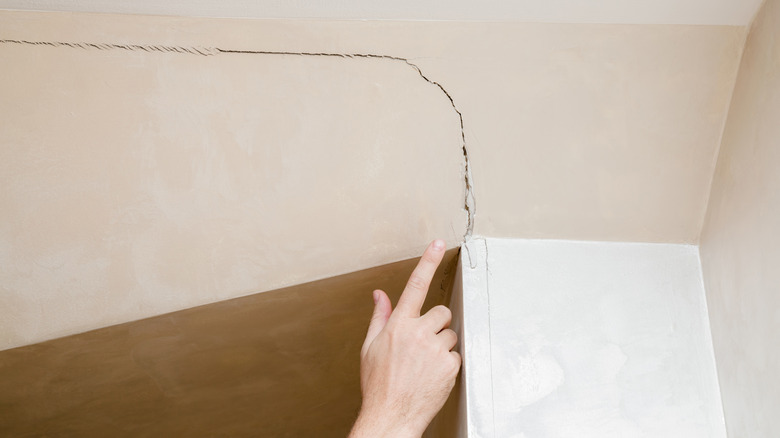What It Really Means When Your Walls Crack
Finding a crack in a wall is never a good thing, but it doesn't mean that the world is ending, either. Sure, unexpected home repairs can be frustrating and may cause financial stress, but if you catch them in time, you may prevent further issues down the road. Regardless, a cracked wall isn't something that should be ignored or put off. This is especially true if you're trying to sell your home because a cracked wall definitely won't pass inspection.
Before you get too worried, you should know that the seriousness of a crack depends on its cause. "An isolated crack visible only from the inside of your basement or crawl space isn't immediately a cause for alarm," Andy Beery, founder and CEO of Acculevel tells Realtor.com. If you see multiple cracks, however, that could be a problem. Read on to find out what may be causing unsightly cracks to appear in your walls.
What causes cracks in the wall?
There's a number of reasons your drywall may crack, including fluctuations in temperature and humidity levels, faulty taping (which may cause a thin, straight crack), or a structural problem, among other issues. If you see a bit of discoloration around the edges of the crack, you may have a leak. According to BobVila.com, hairline cracks, which usually appear over doors and windows, are likely due to a home's age and shouldn't cause too much concern because they can be re-taped and painted.
To determine whether you have a hairline crack or a settling crack, Andy Beery suggests using the penny test. "While holding the penny between your finger and thumb, press the edge against the crack," he tells Realtor.com. "If the crack is thinner than the penny, you have a hairline crack — but if it is wider than the penny, especially if it tapers and widens, this is a settling crack."

